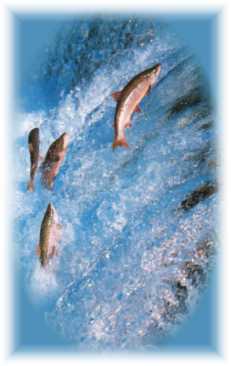 Data
Collection
Data
Collection
 Data
Collection
Data
Collection
To meet the project’s objectives, three main sources of data were incorporated. A specific data set has been compiled and will be used in the analysis to describe the areas where the old growth forest remains in the central coast. More specifically, the data set collected provides a framework for the development of the forest conservation strategy and for establishing the most viable habitats for grizzly bear population in the context of available food sources, namely pacific salmon population.
The first important component of the data includes the TRIM gridded digital elevation model with 25m intervals, at a scale of 1:250,000 for each of eight map sheets. The contours for the elevation evaluation were obtained from the British Columbia Ministry of Environment, Lands and Parks (MELP) for the purpose of this project only.
Similarly, the watershed atlas for
MELP regions 5 and 6, provided by the same Ministry, were collected in
the
scale of 1:50,000 (see Table 1 for
a listing of watersheds considered in this analysis). In addition to the
major rivers,
streams and lakes, it contains the
areas of remaining old growth forest in the scale of 1:250,000, British
Columbia
biogeoclimatic zones and ecosystem
mapping, tree farm licenses and timber supply areas, and other various
administrative and protected areas.
Secondly, the land use data were
provided by the British Columbia Ministry of Environment, Lands and Parks.
The land use classification would
be primarily used for the human activities and development determination.
In addition, these data permit the
forest types classification, including areas of the old growth, second
growth,
and logged activities.
All data collected and employed in
this analysis was obtained through the generous cooperation of LandData
BC
and the Ministry of Environment,
Lands and Parks. In accordance with this agreement, neither the authors
of this
document, nor its academic supervisors
may distribute or otherwise make available to anyone not identified
in the original sharing agreement.
This restriction specifically refers to the Base Thematic Map BTM), Digital
Elevation Model (DEM) or the Watershed
Atlas data sets.
Data description:
Watershed Atlas
“The Watershed Atlas is a digital
representation of the stream network of British Columbia as depicted on
1:50,000 National Topographic Series
maps along with watershed boundaries of 3rd order and larger watersheds.
The Watershed Atlas is organized
into 246 watershed groups that were originally assembled based on natural
watershed groupings and size.” (URL
reference: http://www.bcfisheries.gov.bc.ca/fishinv/basemaps.html).
The downloaded watershed Atlas is
in Albers Conic Equal-Area Projection.
| Short Name | Long Name |
| BELA | Bella Coola River |
| KHTZ | Khutze River |
| KTSU | Kitasu Bay |
| LRDO | Laredo Inlet |
| NASC | Nascall River |
| NECL | Necleetsconnay River |
| NIEL | Niel Creek |
| OWIK | Owikeno Lake |
BTM
Baseline Thematic Mapping Version
1.0 (February 2, 1995). Update cycle is listed as greater than five years
(LandData BC home page: http://ldbcweb.landdata.gov.bc.ca:8001/LdbcSystem/index).
“The mapping coverage
produced using these specifications
conforms to the National Topographic System of Mapping at a scale of
1:250 000. The National Topographic
System (NTS) is a geographic system under which Canada is divided
into numbered primary quadrangles.
Each quadrangle is 4° latitude by 8° longitude” (Province of British
Columbia, 1995, p.1) These data
were originally in ArcView export format (*.e00), and were converted into
ArcView shape (from within ArcView).
TRIM Gridded Digital Elevation Model - 25m
A regularly gridded Digital Elevation
Model (at 25m intervals) data set, version 1.1, for the Province of British
Columbia. Derived from breaklines,
areas and mass points. Elevation values are accurate to within 5m vertical
and +/- 10m horizontal accuracy.
These data are specified “complete” as of March 30, 1998, and are intended
for
use at 1:20,000 (Geographic Data
BC, URL ref: http://www.landdata.gov.bc.ca/). These data were originally
were
in NTS *.grd (grid) files, which
required conversion before ArcInfo (and eventually ArcView and IDRISI)
could
work with it.
